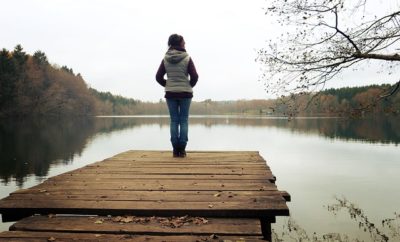
Insights + interviews
In Conversation With Dr Leong Hoe Nam
Dr Leong Hoe Nam an Infectious Diseases Physician recently had a chat with us to tell us more about shingles.
AA: Hi Dr Leong, first of all, what’s the connection that shingles has with chickenpox? So, many of us have had it as children, and then we thought that that’s the end of it. What has happened?
DL: Shingles and Chickenpox comes from the same virus, the Herpes Zoster virus. You may have heard of the sexually transmitted infection known as herpes, well that is commonly referred to as herpes simplex virus. Herpes Zoster is another herpes virus, and you probably realised that there are eight such members in the herpes family that causes infection in Singapore. Individuals first acquire chickenpox, then the virus will remain latent or ‘sleeping’ in the body – specifically in the nerve cell bodies of the neurons. Whilst here, they are under the controlling of the circulating immune cells. These viruses though sleeping, are like terrorists, waiting to strike when the immunity is not watching. This happens when the immunity is weakened (e.g. elderly age, immuno suppressive drugs like steroids/chemotherapy or certain conditions like HIV), or when the body lowers their defenses on the virus (this happens when a person has not been challenged with the virus for a long time). Hence, this virus performs an act of cowardice by striking us when we are weak in the form of shingles. Because it travels up from one nerve cell body – it is often found on just one half of the body/one dermatome (area innervated by one nerve).
It thus means that:
(i) If you have ever had chickenpox, you will have zoster. And practically everyone has had chickenpox.
(ii) You cannot never get rid of it. If your defenses are lowered and you are in for trouble.
AA: There’s also this myth that shingles only affects older people. How true is that? And what some other myths associated with shingles?
DL: There is some truth to this – because their immunity is poorer. But shingles have also been reported in children as young as three-years-old. Think of it as a battle between the virus and the body’s immunity. When the virus sees an opportunity due to the weakened state of one’s immunity, shingles can occur. Conversely, if immunity is weak, but the virus does not seize the opportunity, we don’t get shingles. Then one should count his or her blessings! As it can be a painful episode which I will explain later.
AA: What are the symptoms of shingles?
DL: Pain is the most common and unifying symptom. It happens in a large majority of patients and helps to differentiate it from other rashes. However, a small proportion of people won’t have pain. Pain can be severe, disrupting to life, affecting sleep, and in a small group of individuals persist for years, even though the rash has cleared and recovered, with normal overlying skin. You will find rashes that usually occur on the torso, and then the face. The rash is classically described as a patch of redness, with vesicles (bubbles filled with liquid) over it. And it appears in crops. Subsequently, the vesicles will turn cloudy, and eventually dry up and scab. In some individuals who are at risk (those with keloid risk) it can be very very disfiguring. In other cases, the disease becomes disseminated, and the shingles which is usually located at one place, spreads all over the skin and it becomes like chickenpox again. You can have the disease in the brain, liver, stomach and gut, and in these occurrences patients can die from it (50% risk), these people tend to be very immuno compromised hosts, (e.g transplant recipients).
AA: Could you also tell us about postherpetic neuralgia and how it affects one’s daily routine? How devastating and debilitating can it be?
DL: It is often described as an annoying pain. At the mere touch or even sensation from a passing breeze can cause severe shooting pain, and nothing relieves it. So imagine you are working, and suddenly, a shooting pain occurs over the face and you reflexes make you jerk in reaction to the pain, it is that uncomfortable as well as socially awkward. And should you try to take painkillers, some of them can make you drowsy. So it becomes a tussle between enduring pain and being drowsy.
AA: Does the risk of postherpetic neuralgia increases with age? If so, is there a specific age group that is most susceptible to it?
DL: Yes the risk does increase with age, most likely due to the correlation between ageing and the weakening of one’s immunity. But there’s no specific age group that is most susceptible to it. The older one is, the greater the risk and need for protection.
AA: So if someone has a shingles outbreak, should they be worried that it might happen again in a year, two years or five years down the road? Could there be another reactivation?
DL: Yes, there is overall a 10% to 30% chance of a second shingles outbreak. Immunologically it has been reported to occur between 18 to 24 months. But that is the exception rather than the norm. Most of the time there’s no recurrence.
AA: Last but not the least, how can a person minimise the risks of shingles?
DL: One word, vaccination.









